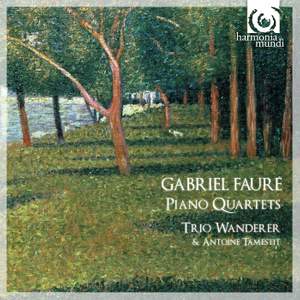Gabriel Fauré was a remarkable pianist who included his instrument in almost all his compositions, but seldom as a soloist: he preferred to combine it with chamber ensembles to produce the intimate atmosphere he so favoured. Until the early 1870s, Parisian musical life revolved around opera, to the detriment of instrumental works. Existing institutions paid little attention to the scores of young French composers.The Société Nationale de Musique, founded in 1871 and presided by Camille Saint-Saëns and Romain Bussine, set itself the mission of promoting French music and offering a forum for the dissemination of orchestral and chamber works. Its founder members also included César Franck, Lalo, d'Indy, Duparc, Massenet, and Fauré, who became secretary in 1874. In an interview with Le Petit Parisien in 1922, he spoke of the importance of the Société: “The truth is that, before 1870, I would not have dreamt of composing a sonata or a quartet. Only when Saint-Saëns founded the Société Nationale de Musique in 1871, whose primary aim was to put on works by young composers, did I set about doing so.” And in fact almost all Fauré's chamber works had their premieres under the auspices of the SNM: the two violin sonatas, their counterparts for cello and piano, the piano quartets, the First Piano Quintet, and the Piano Trio.
Since 1999, the Trio Wanderer has released, on the Le Chant du Monde and harmonia mundi labels, a series of recordings that have received a warm welcome from the press. Born in 1979,Antoine Tamestit studied with the Tokyo Quartet at Yale University and Tabea Zimmermann in Berlin. He was a BBC New Generation Artist (2005-07) and a Borletti- Buitoni Trust scholarship holder in 2006. He made his debut at the Lucerne Festival with the Vienna Philharmonic and Riccardo Muti in 2008. The Berlin Konzerthaus has offered him a residency in 2009/10. He will premiere in several cities (Berlin, Vienna, Graz, London) a concerto written for him by Olga Neuwirth.





